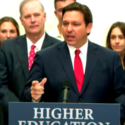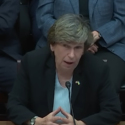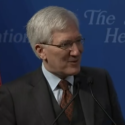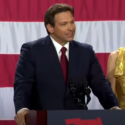Two stories appearing on the GW Hatchet Online show why a college education such as the one offered at George Washington University here in our nation’s capital trains students so well for government work. “The task force charged with generating $60 million through innovation and fundraising has collected almost 200 ideas from the community on how to spend smarter, but the group is still wrestling with which savings should be counted, and how,” Lauren French reported on February 1, 2010. “Launched in October by University President Steven Knapp, the Innovation Task Force is designed to evaluate the University’s budget and ensure funds are being used in the most efficient ways without resorting to program cuts.”
“The account to track the savings has not been established, Associate Vice President for Academic Operations Jeffrey Lenn said, because he and other senior officials are still discussing what money will be eligible for inclusion toward the $60 million goal. For example, the University may make an effort to convert all light bulbs on campus to energy-efficient ones.”
That same day, Sarah Josephs reported that “Salaries for GW’s top administrators jumped an average of 54.7 percent from 2002 to 2007, while faculty salaries increased an average of 21.5 percent over roughly the same period, according to University salary data.”
For example, “For the 2007-2008 academic year, full-time professors earned an average of $128,500, associate professors earned an average of $92,600, and assistant professors earned an average of $75,100.”
“New undergraduate tuition that year cost $39, 420,” Josephs informs us.
Meanwhile, she reports that:
- “The University’s four vice presidents saw varying increases in their salaries over the time span, with Executive Vice President Donald Lehman seeing the largest increase – 52 percent. John Williams, the vice president of health affairs and University provost, had the highest salary of vice presidents in 2007, earning $772,500, according to the report;
- “University President Emeritus Steven Joel Trachtenberg saw an 81 percent increase in salary over the time period, according to the data. Trachtenberg only served for seven months in 2007 before retiring at the end of July, but the data report his payment as $1,025,875 for the full year, after annualizing the roughly $600,000 he received through July; and
- “University President Steven Knapp made $298,179 for his first five months in office – August 2007 to December 2007 – which equates to an annual salary of $715,627.”
Executive Vice President and Treasurer Lou Katz told Josephs that “GW’s salaries should not be compared to a national average, as the cost of living in D.C. is much higher than other parts of the country.” Lou, some of us have been living here for a lot less.
Perhaps, in honor of the film Groundhog Day, GW administrators are missing the point more than once. On the face of it, like President Lyndon Johnson fighting losing multi-billion dollar wars on poverty at home and in Vietnam abroad while personally turning off lights at the White House in order to save taxpayers money, they seem to be providing a hyper-inflated update of the old adage about being penny-wise and pound- foolish.
Malcolm A. Kline is the Executive Director of Accuracy in Academia.










